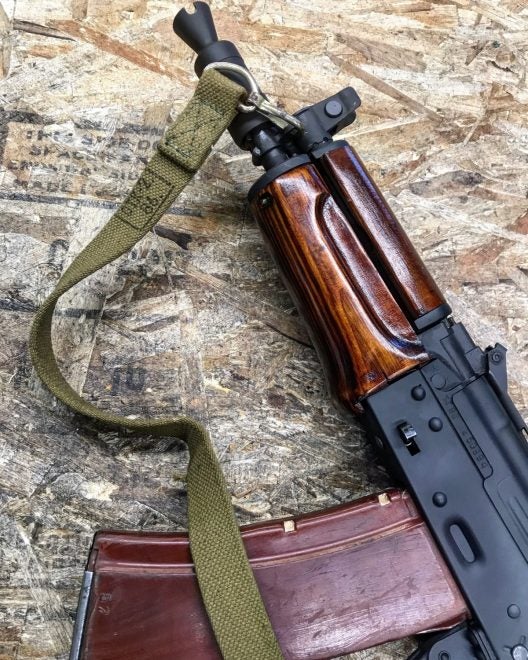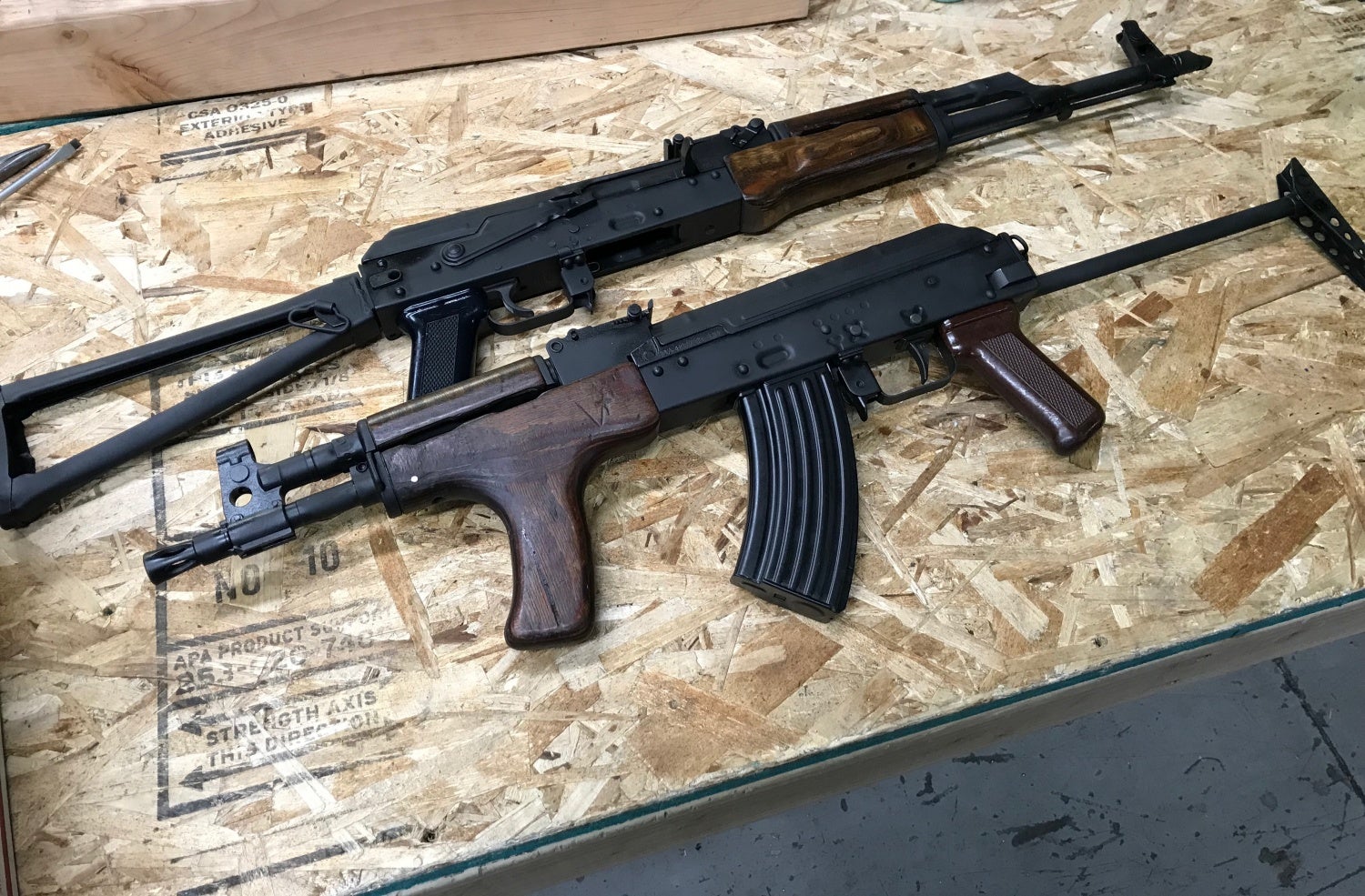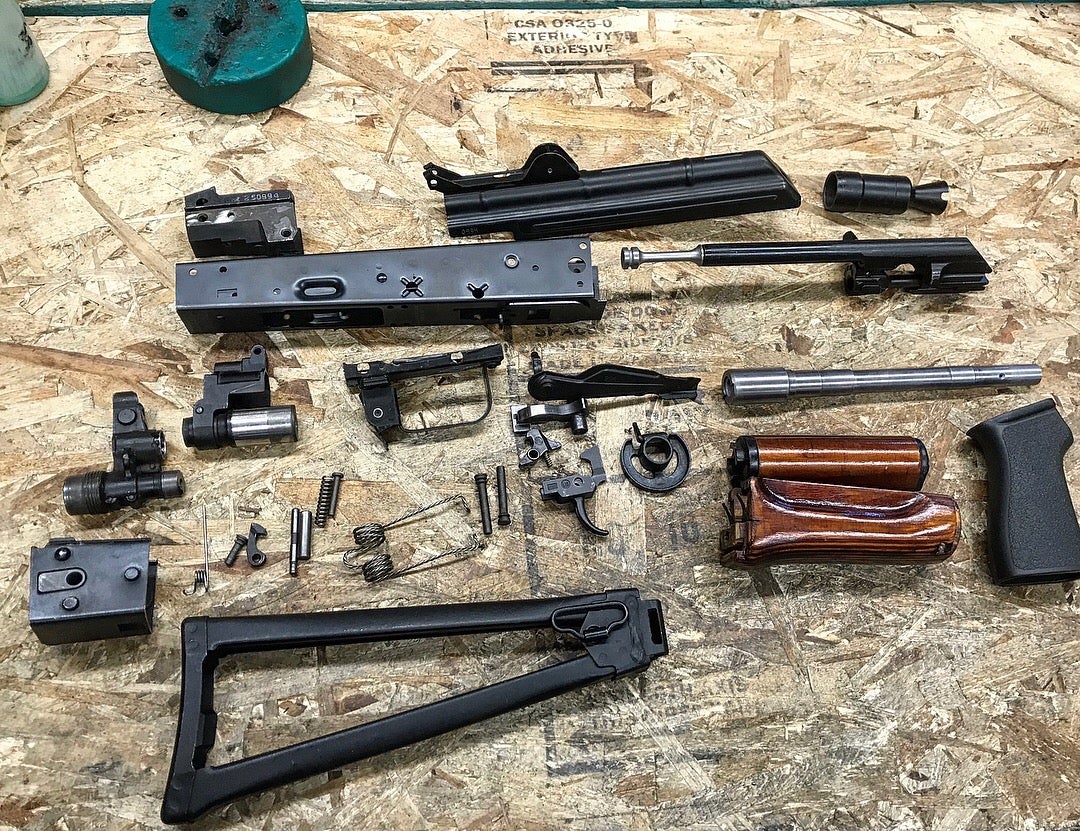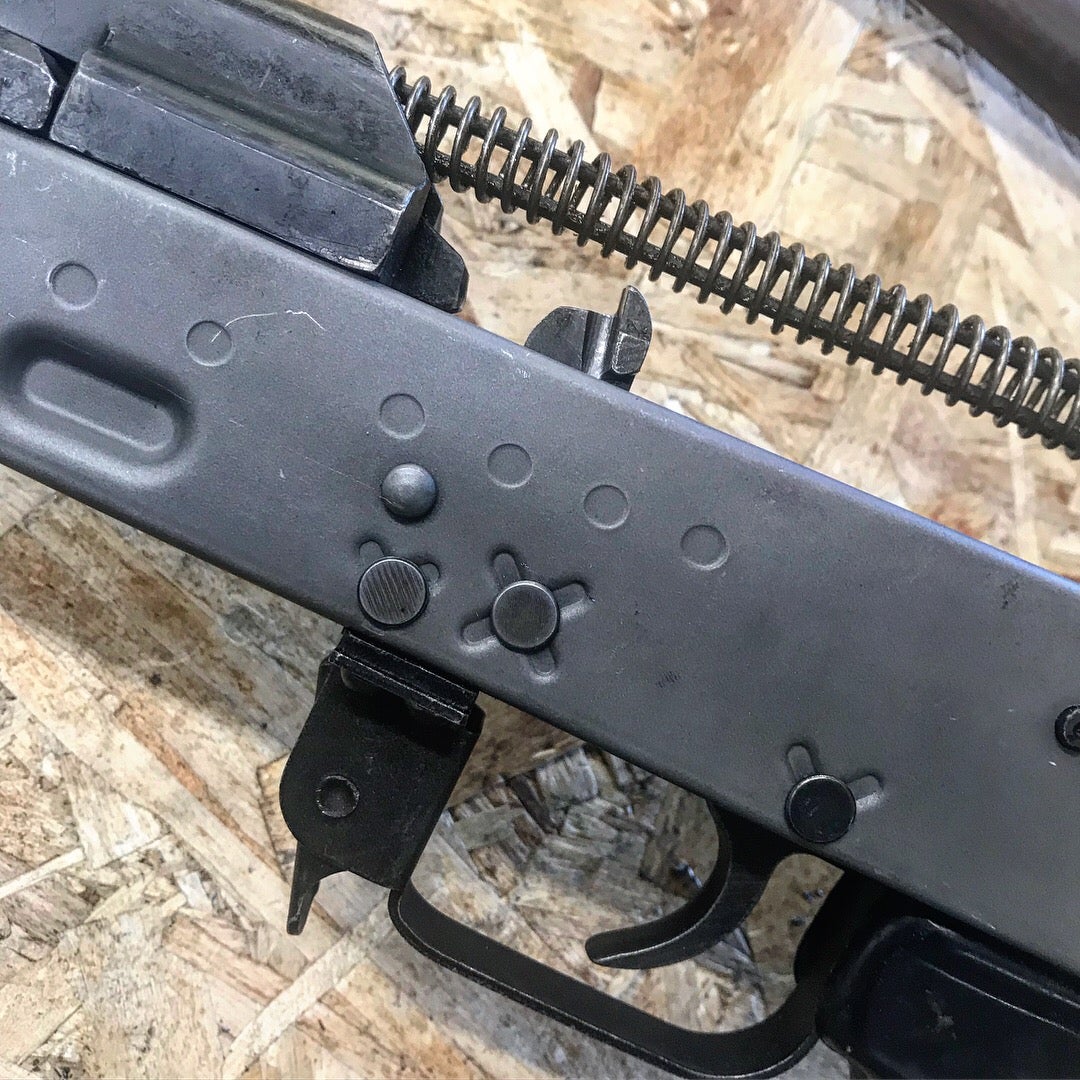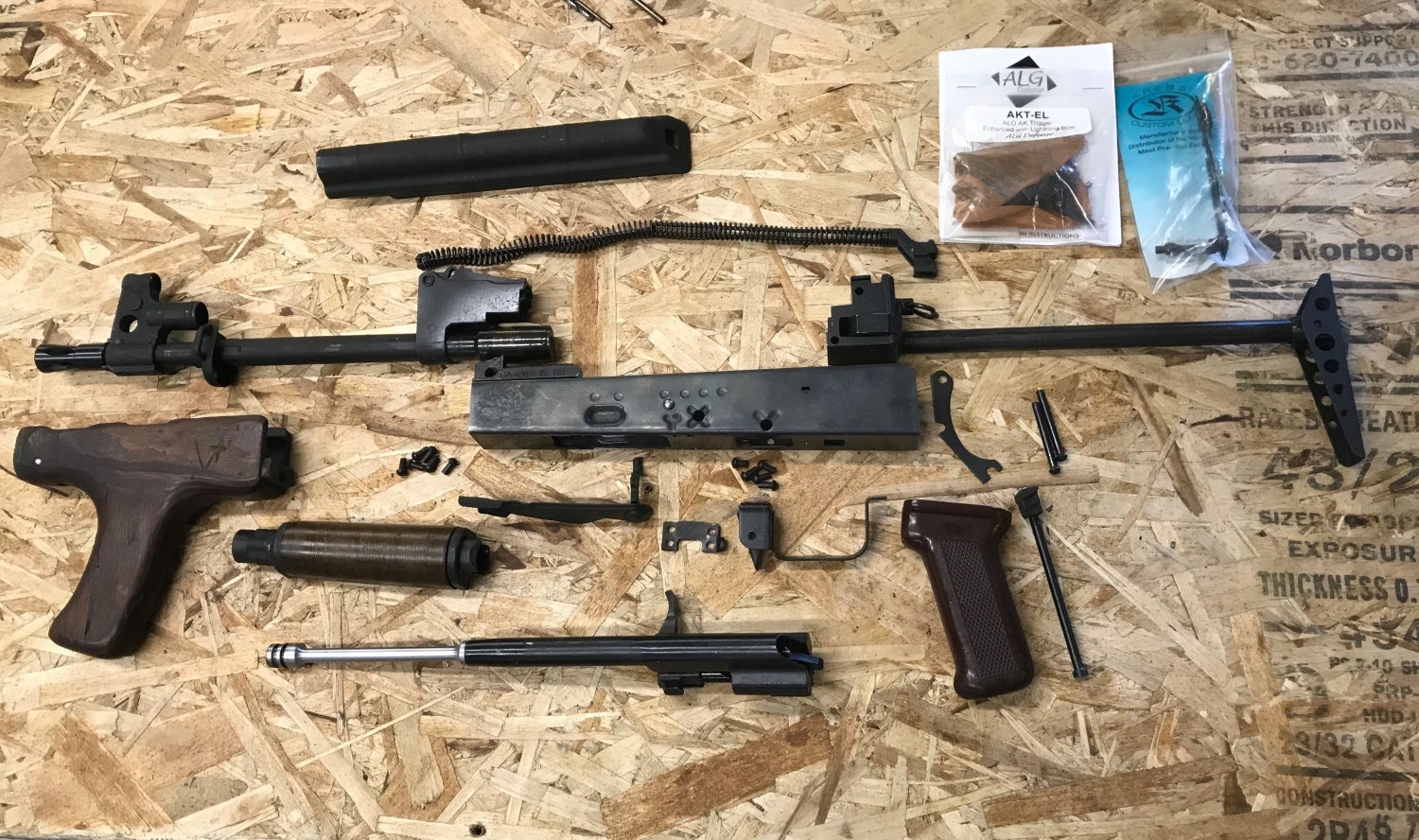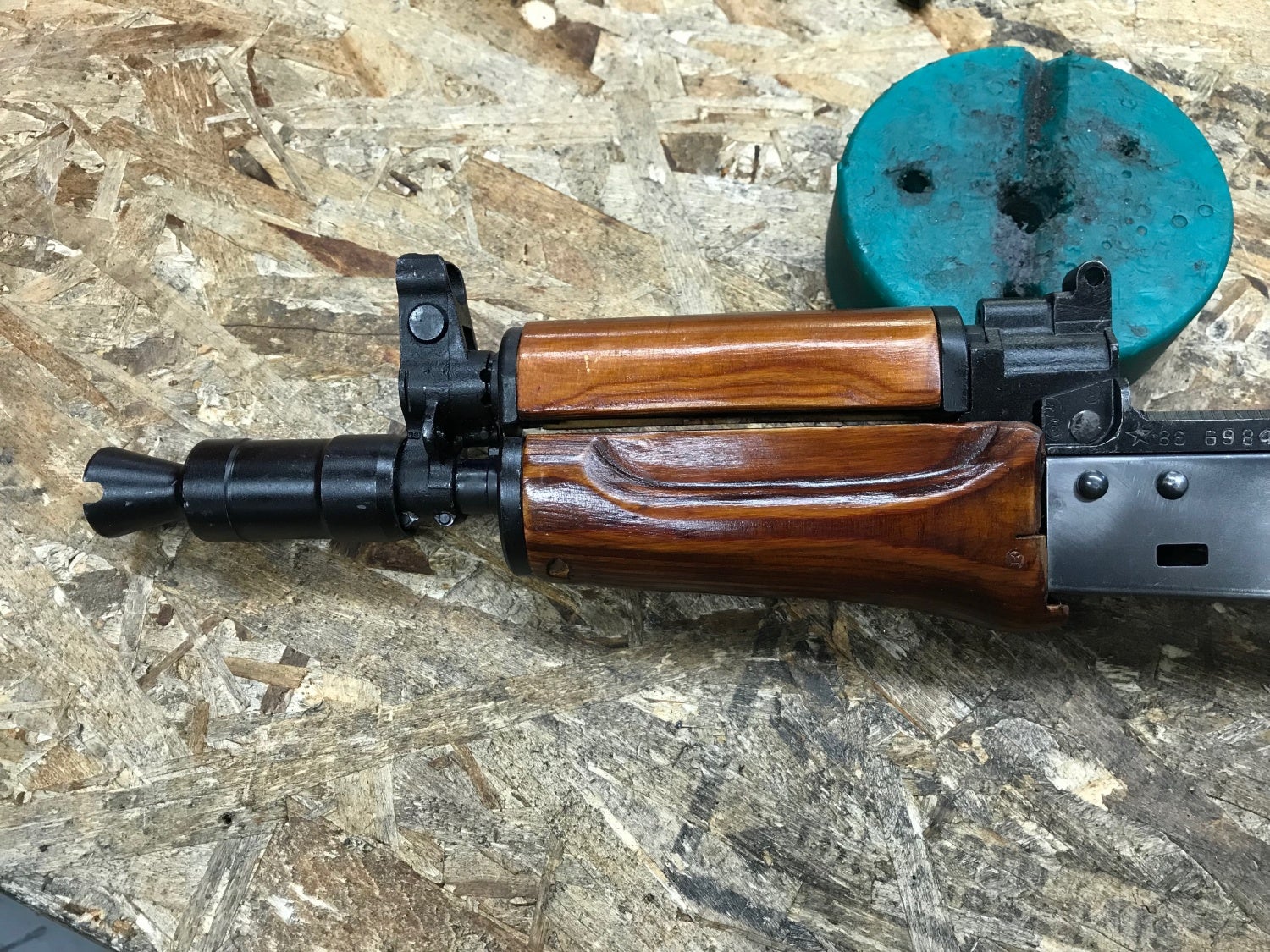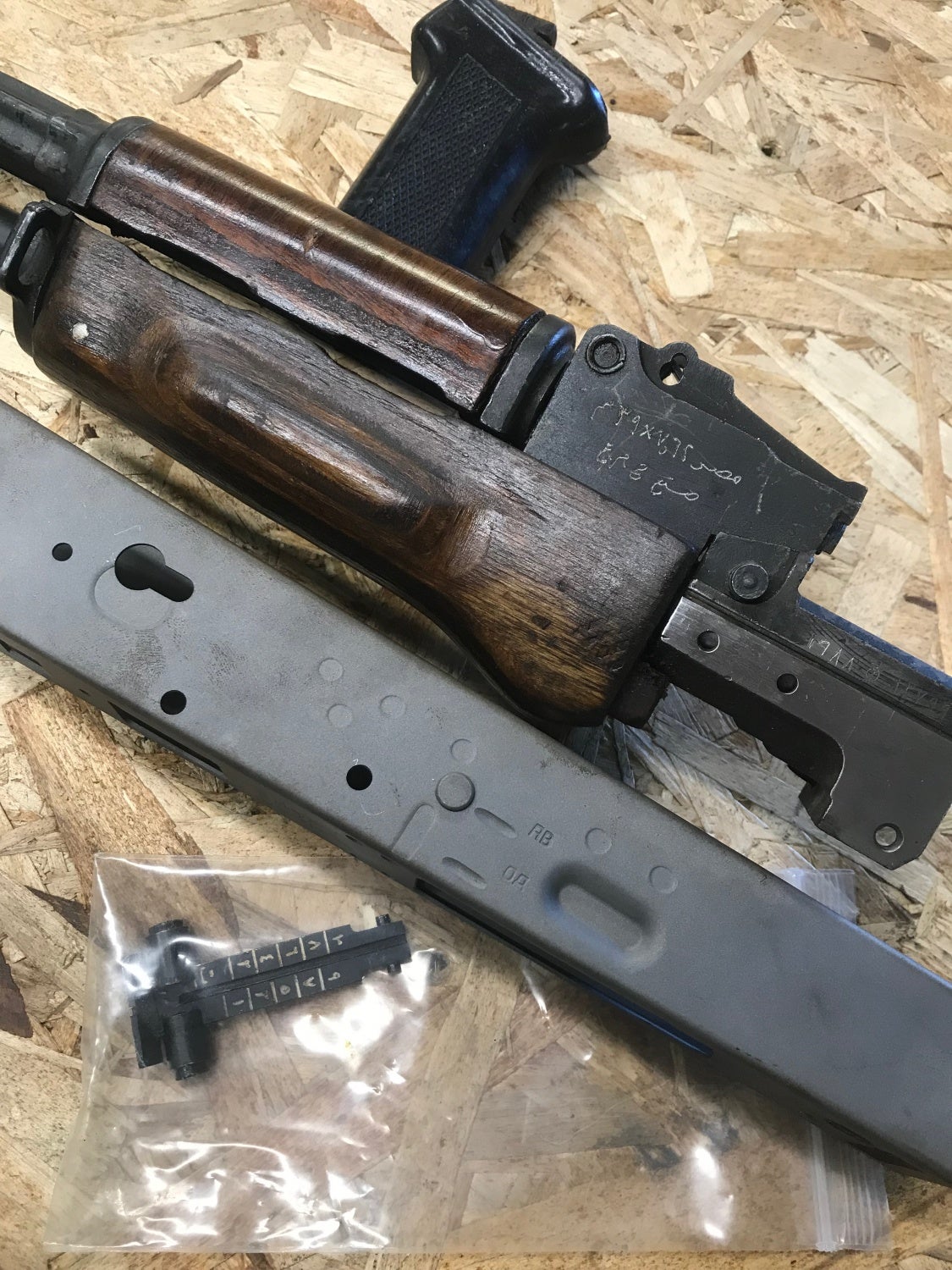Lynndon Schooler is an avid Kalashnikov enthusiast and works in the industry himself. He has visited numerous Kalashnikov collecting venues in Russia over several years, running a Facebook page called 907 KALASH that helps chronicle his finds. This is his first guest post for TFB.
The Kalashnikov rifle first came to the US civilian market in the 1980s. With mud-soaked scenes of Vietnam still running through the collective memory of the country, “the bad guy’s gun” was thought of as a simple and inexpensive alternative to sound Western designs. Despite all the American shade, the Soviets had done their homework, and many veterans who went up against the gun or even carried it in backcountry operations knew its mettle. The Iron Curtain, however, concealed from the general public a long and thorough development process, with multiple prototype iterations. The refined AK (Avtomat Kalshnikova- or Kalashnikov’s automatic rifle) gained mainstream popularity from decades of media exposure through the Soviet-Afghan conflict through contemporary American use of the AK with special forces in modern Middle-Eastern battle spaces. US companies, looking to meet demand, started to build with the original parts available to them through imported parts kits.
Unlike our Warsaw pact rivals, we had zero knowledge on how to build AKs, so naturally, there was a steep engineering learning curve. Reverse engineering of an AK started with the receiver. Per US law, kits came in without receivers and there was no domestic 7.62×39 barrel fabrication. Correct heat treating took years to develop, as the pioneers faced metal fatigue, receiver cracks and at times comically contorted dimensions. Additionally, we had little information on how the Soviets riveted their receivers. Riveting tools and fixtures had to be handmade to correctly smash the receiver rivets.
The challenge to produce a U.S. Kalashnikov clone was immense, and was tackled through trial and error, careful examination of the metallurgy of captured bring backs, and specific tools and fixtures.
We were working without any original tooling and dies; so US builders had to hone the craft through practice, many making their own jigs and rivet templates from scratch. The best US guns are “hand-made” so to speak by an individual who has made many AK’s of questionable quality until they gained the experience to get it right every time. Without a socialist military-industrial complex behind you, practice makes perfect. Barreled kits were abundant in the early days, which removed several steps in populating a barrel and pinning on sights and gas blocks. Unfortunately, the 2005 barrel importation ban put a stop on the most convenient kits, and US manufacturing had to rise to the occasion. American precision and quality control in barrel manufacturing brought a consistency to barrel concentricity, one of the few areas where the US outperformed the Combloc originals. Today, we have come a long way in our production expertise. US manufacturing can competently make receivers, gas blocks, trunnions, fire control groups and barrels, sometimes rivaling the originals. Notably, not everyone took an artisan approach to craft a quality fighting rifle. A few companies valued profit over quality improvement, which has been well documented in an article from my good friend Vladimir Onoky at Kalashnikov Media group.
My personal entry into the world of AK was in 2004. Like many, my first exposure was with my brother’s WASR-10. I loved shooting that rifle, and I knew that I had to learn more. After years of building rifles for myself, taking the Rifle Dynamics build course, and creating my own Alaska-based AK community (no pun intended), I know that I wanted to make a career in manufacturing quality AK rifles, and I am lucky to have found that in my current work with M13 Industries in Las Vegas, Nevada.
Craftsmanship requires the correct tools, AK Builder and Forbus are my main source for riveting tools, jigs not to mention a few in-shop built tools and fixtures. Picking quality parts is a must, and I have a personal soft spot for original surplus as much as possible. I’ve tested a lot of different aftermarket components and came to trust the Bolton Block by Venom tactical, JMAC GBC-13, Saberworks KOP and the KNS piston to name a few. For optics mounting, RS Regulate and Ultimak dominate the world of rails. Early Krebs Custom enhanced safeties meet the grade but the newer ones are leaving something to be desired, in my opinion. For receivers, we are lucky to be in a time with multiple quality options. Another personal preference is to have the barrel gas port and receivers not pre-drilled. At times, front and rear trunnions require bespoke rivet hole drilling to give special attention to sight alignment and the straightness of the gun. Selecting the gas port size and location gives the builder greater control on the gassing of the rifle and allows for a wider range of production variants. The Russian pattern AK 104/105 for example, does not have the standard gas port location, but rather a 6mm reverse of a standard AK 74 position. These steps combined with quality parts and correct head spacing create a robust, straight and accurate rifle, built with the production philosophy to treat every rifle as if a life depends on it, because it very well may. We build in a time when Americans have already put in and continue to put in the legwork to build a quality AK. It is common to see US parts and accessories in the hands of elite AK operators around the world. Seeing the journey of American AK production only fuels my desire to learn more on how these workhorse rifles are manufactured in other countries, under a wide spectrum of production support.
Resources:
Photographs by Author
Shayn Strigal with Rifle Dynamics
Troy Sellars with In Range Inc.
 Your Privacy Choices
Your Privacy Choices
